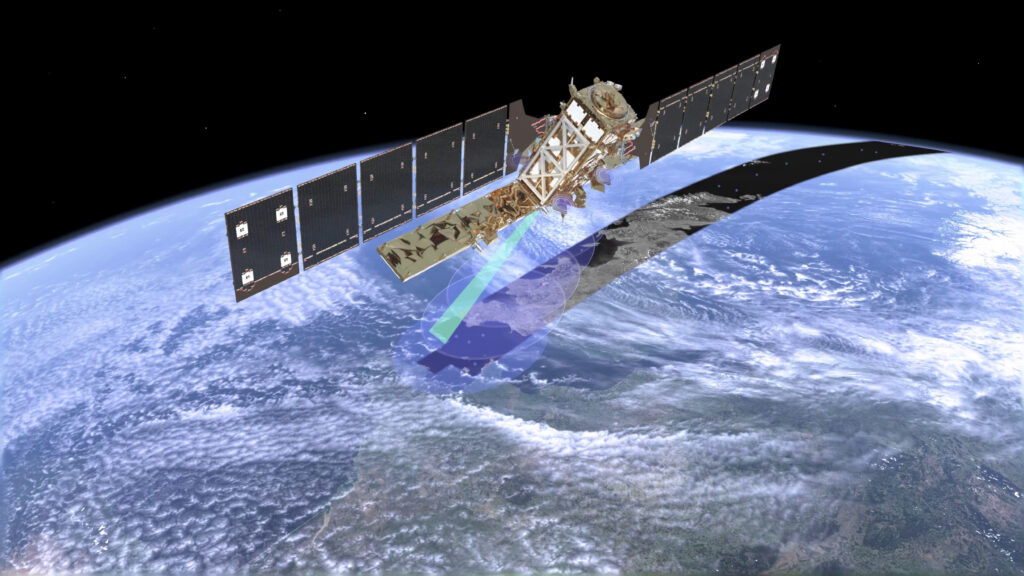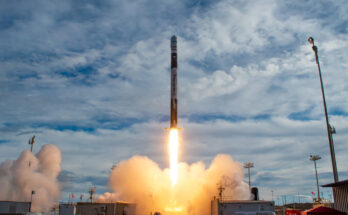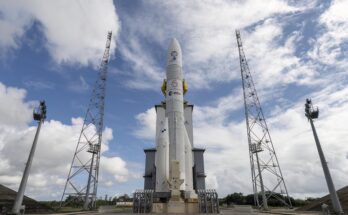
Late last week, Europe’s Space Agency (ESA) successfully launched the third Sentinel-1 satellite . The Sentinel-1C mission, launched aboard a Vega-C rocket, will extend the capabilities of its predecessors, providing high-resolution radar imagery to monitor Earth’s changing environment.
This new satellite will support a wide range of applications, including disaster response, climate change monitoring, and agricultural management. Additionally, Sentinel-1C introduces advanced capabilities for detecting and tracking maritime traffic, enhancing maritime security and safety.
The launcher’s mission, called VV25, is a return-to-flight for Vega-C marking the restart of routine commercial operations for the new launcher – a key step in restoring Europe’s independent access to space. The first commercial flight in December 2022 failed due to a nozzle issue in its Zefiro-40 motor.
About Copernicus Sentinel-1C
The Copernicus Sentinel-1 mission is a key component of the European Union’s Earth observation program. It utilizes a constellation of satellites equipped with advanced radar technology to provide high-resolution imagery of Earth’s surface, regardless of weather conditions or time of day.
Sentinel-1C, the latest addition to the constellation, offers enhanced capabilities, including improved maritime traffic monitoring. By integrating an Automatic Identification System (AIS), the satellite can accurately track ships, aiding in maritime security and environmental protection.
The mission supports a wide range of applications, such as:
* Environmental Monitoring: Tracking sea ice, glaciers, and forest changes
* Disaster Response: Detecting and monitoring natural disasters like earthquakes and floods
* Maritime Surveillance: Identifying oil spills, illegal fishing, and tracking ships
* Land Use and Urban Planning: Mapping land cover and urban development
Sentinel satellites are designed and built by a consortium of more than 70 companies led by Thales Alenia Space and Airbus Defence and Space. The program struggled initially, but funding challenges were overcome as the project’s data garnered significant interest from the scientific community. This success resulted in ongoing financial support from its European partners for the program. In 2020, a substantial order for new Sentinel satellites was placed, aiming for launches in the coming years. It’s anticipated that all these satellites will be in orbit by the end of the decade.
Sentinel-1 data are freely available via the Copernicus Data Space Ecosystem, providing instant access to a wide range of data from both the Copernicus Sentinel missions and the Copernicus Contributing Missions.
A military history enthusiast, Richard began at Forecast International as editor of the World Weapons Weekly newsletter. As the Internet grew in importance as a research tool, he helped design the company's Forecast Intelligence Center and currently coordinates the EMarket Alert newsletters for clients. Richard also manages social media efforts, including two new blogs: Defense & Security Monitor, covering defense systems and international issues, and Flight Plan, which focuses on commercial aviation and space systems. For over 30 years, Richard has authored the Defense & Aerospace Companies, Volume I (North America) and Volume II (International) services. The two books provide detailed data on major aerospace and defense contractors. He also edits the International Contractors service, a database that tracks all the contractors involved in the programs covered in the FI library. More recently he was appointed Manager, Information Services Group (ISG), a new unit that encompasses developing outbound content for both Forecast International and Military Periscope.



